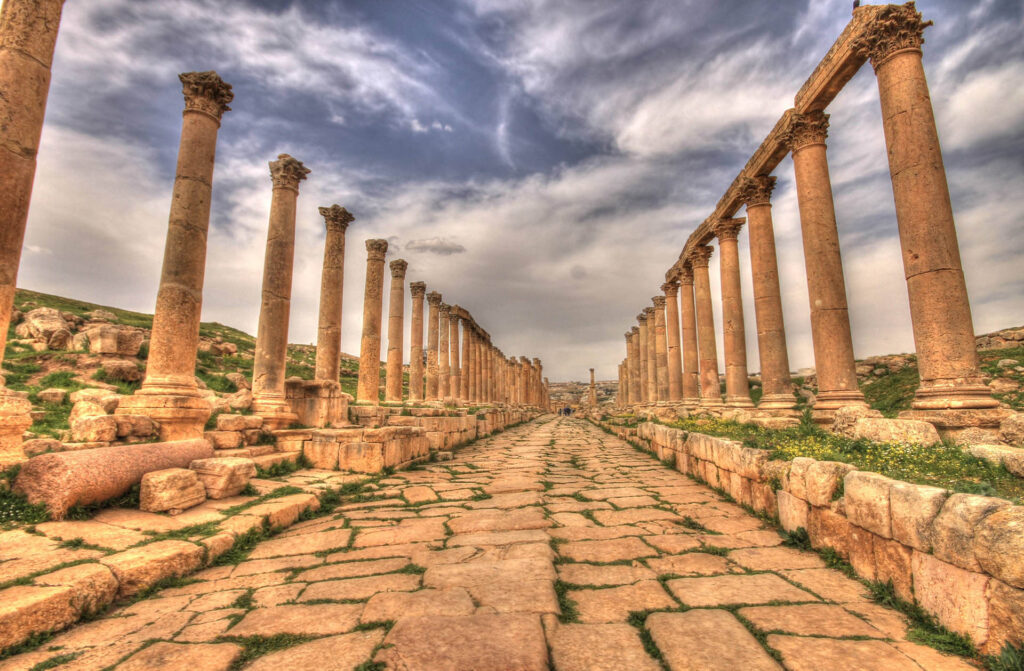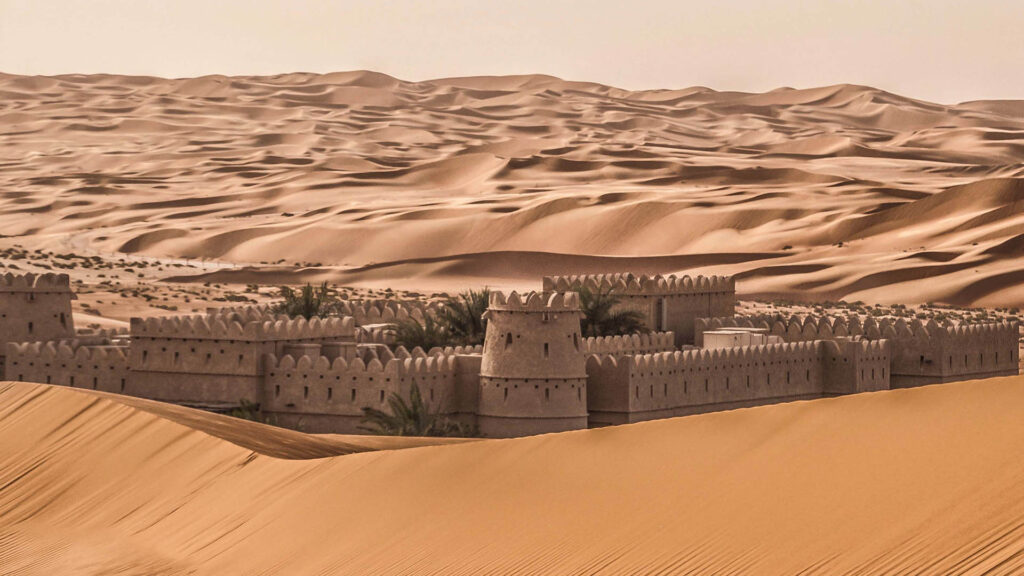Nestled along the banks of the mighty Nile River, the Luxor Temple stands as a breathtaking tribute to the architectural and artistic prowess of ancient Egyptian civilization. This awe-inspiring complex, once dedicated to the veneration of the supreme deities Amun, Mut, and Khonsu, has captivated visitors for centuries with its monumental scale, intricate carvings, and rich cultural heritage.
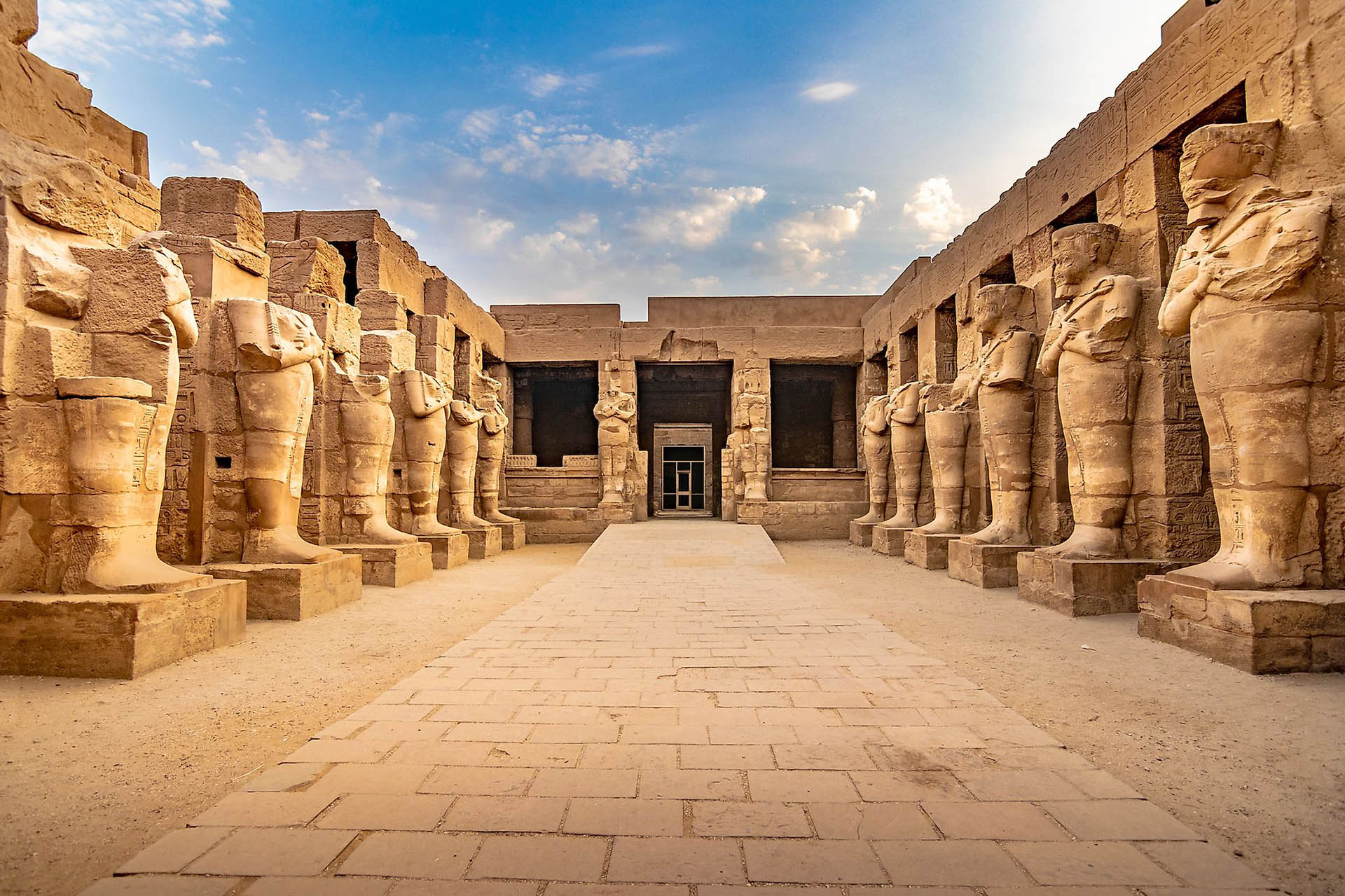
The Luxor Temple: A Timeless Testament to Ancient Egyptian Grandeur
The History and Significance of the Luxor Temple
The Luxor Temple, originally known as Ipet Resyt (“The Southern Sanctuary”), traces its origins back to the 14th century BCE, during the reign of Amenhotep III, one of the most influential pharaohs of the 18th Dynasty. However, the temple’s construction and expansion spanned multiple dynasties, with each successive ruler leaving their mark on this sacred site.
The Grandeur of Amenhotep III’s Contributions
Amenhotep III’s vision for the Luxor Temple was nothing short of grandiose. He commissioned the construction of the temple’s main sanctuary, the Peristyle Court, and the renowned Colossi of Memnon – two massive seated statues that once guarded the temple’s entrance. These awe-inspiring monuments were a testament to the pharaoh’s power, wealth, and devotion to the gods.
Ramesses II’s Expansions and Additions
A century later, the powerful Ramesses II, one of ancient Egypt’s most prolific builders, left an indelible mark on the Luxor Temple. He added the Great Hypostyle Hall, a vast open-air courtyard lined with towering columns that still stand as a marvel of ancient engineering. Ramesses II’s ambitious construction efforts transformed the temple into a grandiose complex that rivaled the grandeur of the nearby Karnak Temple.

The Luxor Temple: A Timeless Testament to Ancient Egyptian Grandeur
The Architectural Wonders of the Luxor Temple
As visitors approach the Luxor Temple, they are immediately struck by its sheer scale and the intricacy of its construction. The temple’s layout is a masterpiece of symmetry and precision, with each section meticulously designed to evoke a sense of awe and reverence.
The Colossi of Memnon: Sentinels of the Temple
One of the most iconic features of the Luxor Temple is the Colossi of Memnon – two massive statues that once stood guard at the temple’s entrance. These colossal figures, each standing over 18 meters (60 feet) tall and weighing an astonishing 720 tons, were carved from quartzite and depicted Amenhotep III seated on a throne, adorned with the traditional regalia of a pharaoh.
Despite the ravages of time and natural elements, the Colossi of Memnon have endured, serving as a powerful symbol of ancient Egyptian craftsmanship and the enduring legacy of Amenhotep III’s reign.
The Great Hypostyle Hall: A Forest of Columns
Within the temple’s precincts lies the awe-inspiring Great Hypostyle Hall, a vast open-air courtyard that is perhaps the most breathtaking architectural feature of the Luxor Temple. This remarkable hall, constructed during the reign of Ramesses II, is a veritable forest of towering columns, each intricately carved with hieroglyphic inscriptions and intricate reliefs.
The sheer scale of the Great Hypostyle Hall is staggering, with its 134 columns soaring to heights of over 20 meters (66 feet) and spanning an area of nearly 50,000 square feet. The hall’s design and construction were a remarkable feat of engineering, showcasing the advanced architectural knowledge and skills of the ancient Egyptian builders.
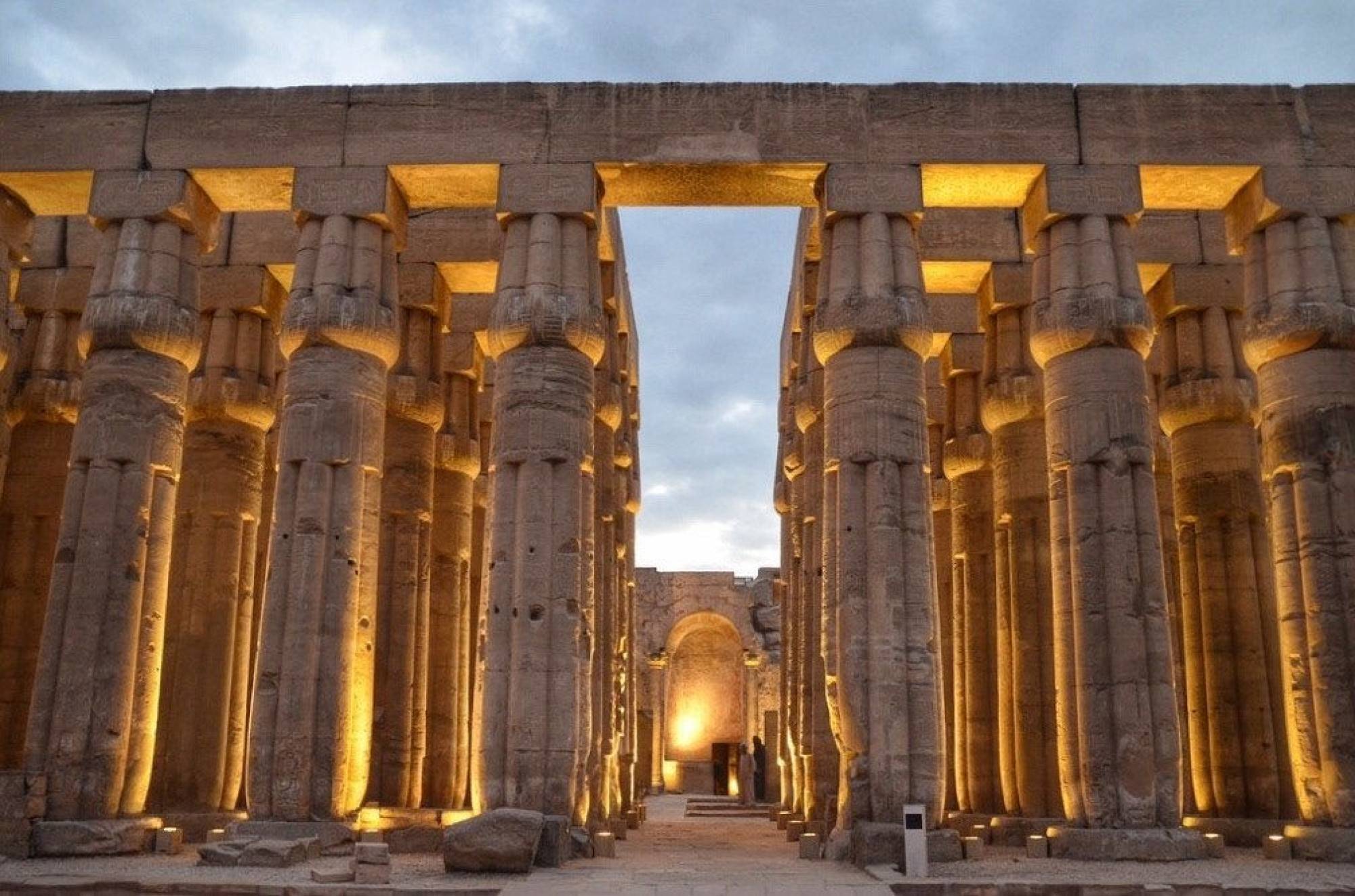
The Luxor Temple: A Timeless Testament to Ancient Egyptian Grandeur
The Artistic and Cultural Treasures of the Luxor Temple
Beyond its architectural marvels, the Luxor Temple is a repository of ancient Egyptian art and culture, with its walls adorned with intricate reliefs, hieroglyphic inscriptions, and vibrant colors that have withstood the test of time.
The Breathtaking Wall Reliefs and Inscriptions
Throughout the temple’s courtyards, pylons, and sanctuaries, visitors are treated to a visual feast of meticulously carved wall reliefs that depict scenes from Egyptian mythology, religious rituals, and the triumphs of various pharaohs. These intricate carvings, executed with remarkable precision and artistry, offer a unique glimpse into the beliefs, values, and daily life of ancient Egyptian society.
One of the most remarkable examples of these wall reliefs can be found in the Opet Temple, a subsidiary structure within the Luxor Temple complex. Here, visitors can marvel at the stunning depictions of the annual Opet Festival, a grand celebration that honored the union of the gods Amun and Mut.
The Vibrant Colors and Symbolism
While many ancient Egyptian monuments have lost their original colors over time, the Luxor Temple stands out for the remarkable preservation of its vibrant hues. The temple’s walls are adorned with vivid shades of blue, red, yellow, and green, each color holding symbolic significance in Egyptian mythology and cosmology.
The use of these vibrant colors not only adds to the temple’s visual splendor but also serves as a powerful reminder of the intricate belief systems and symbolic representations that permeated every aspect of ancient Egyptian culture.
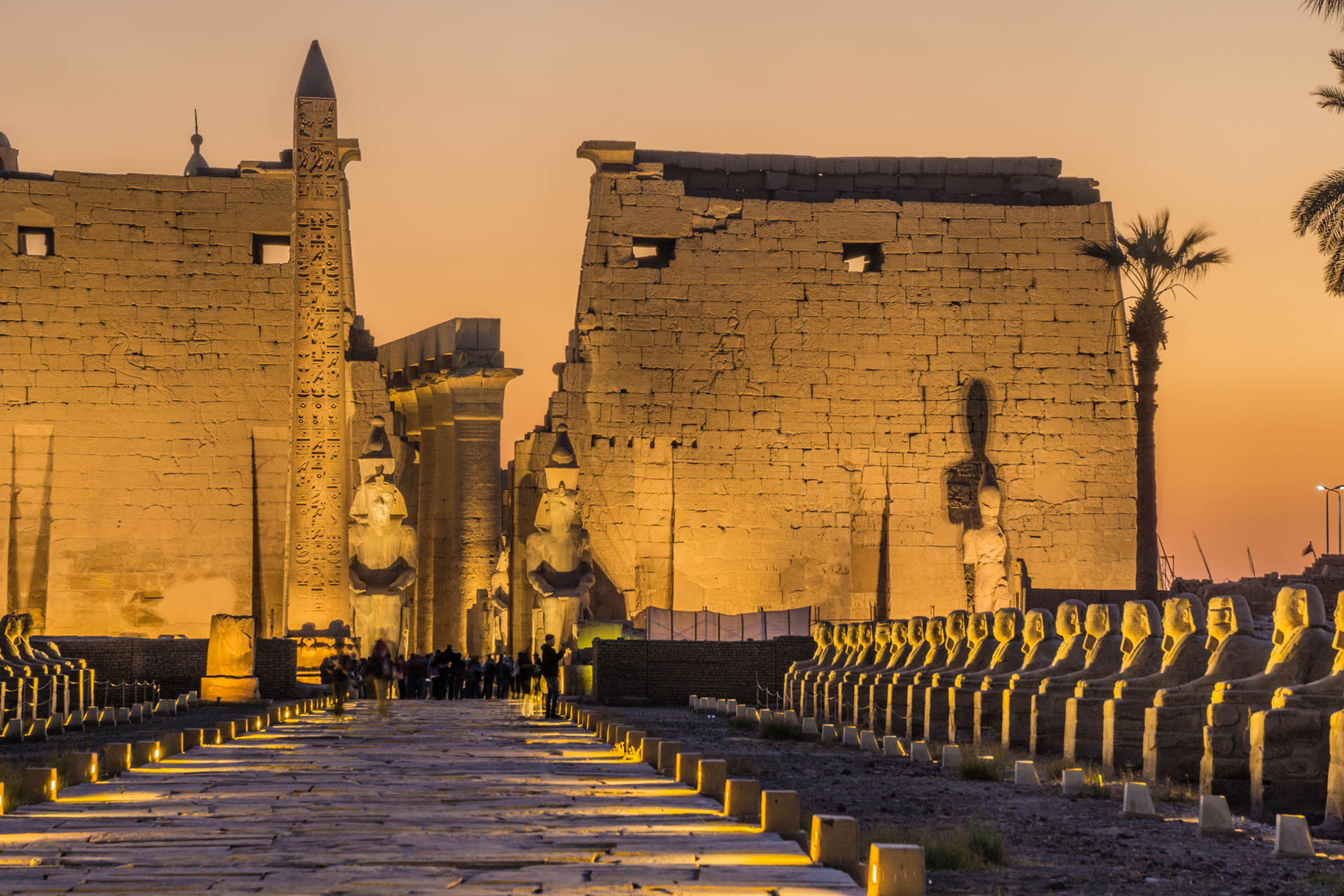
The Luxor Temple: A Timeless Testament to Ancient Egyptian Grandeur
The Luxor Temple in Modern Times
Despite its ancient origins, the Luxor Temple remains an integral part of modern-day Luxor, a city that has long been synonymous with the wonders of ancient Egyptian civilization.
Preservation and Conservation Efforts
Recognizing the immense historical and cultural significance of the Luxor Temple, extensive efforts have been undertaken to preserve and protect this remarkable monument for future generations. International organizations, in collaboration with Egyptian authorities, have implemented comprehensive conservation programs to address issues such as environmental degradation, structural stability, and the impact of tourism.
These efforts have included the careful restoration of damaged areas, the implementation of protective measures to safeguard the temple’s intricate carvings and inscriptions, and the development of sustainable tourism practices to minimize the site’s environmental impact.
A Living Cultural Destination
While the Luxor Temple serves as a testament to the grandeur of ancient Egyptian civilization, it is also a vibrant cultural destination that continues to play a significant role in modern-day Luxor. The temple’s grounds are frequently used for cultural events, festivals, and performances, allowing visitors to experience the enduring legacy of Egyptian heritage in a contemporary setting.
Additionally, the Luxor Temple has become a focal point for educational initiatives,
with guided tours, interactive exhibits, and immersive experiences offering visitors a deeper understanding of the temple’s history, architecture, and cultural significance.
As you wander through the awe-inspiring halls and courtyards of the Luxor Temple,
you can’t help but be transported back in time, immersed in the grandeur and majesty of ancient Egyptian civilization. From the towering columns of the Great Hypostyle Hall to the intricate wall reliefs that adorn every surface, this remarkable monument stands as a testament to the enduring power of human creativity, ingenuity,
and the desire to leave an indelible mark on the world. Whether you’re a history enthusiast, an art lover, or simply someone in awe of architectural wonders, the Luxor Temple is a must-visit destination that will leave you forever changed by its timeless beauty and cultural significance.

The Luxor Temple: A Timeless Testament to Ancient Egyptian Grandeur









